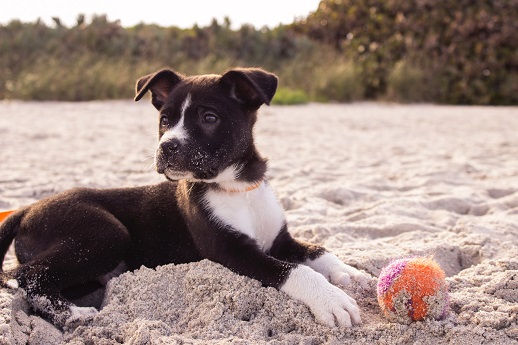While dog chase toys can provide hours of fun and exercise for our furry friends, certain behaviors can pose potential risks to their safety and well-being. As responsible pet owners, it is crucial to be aware of these hazards and take preventive measures to ensure that playtime remains a positive and safe experience for our beloved dogs.
Here are some common dangerous behaviors associated with dog chase toys and how to prevent them.

Dangerous Behaviors and Prevention
In this part, we will introduce 6 dangerous behaviors and corresponding prevention indetail.
1. Swallowing or Ingesting Toy Parts
One of the primary risks of chasing toys is the potential for dogs to swallow or ingest small parts of the toy, which can lead to choking or intestinal blockage. To prevent this:
1.1 Choose chasing toys made of durable and non-toxic materials that are less likely to break apart.
1.2 Supervise playtime to quickly intervene if your dog shows any signs of attempting to chew or swallow the toy.
1.3 Regularly inspect toys for signs of wear and tear, and replace damaged toys immediately.
2. Overexertion and Heat Exhaustion
Intense chasing and fetch games can lead to overexertion, especially in hot weather. To prevent heat-related issues:
2.1 Limit playtime in extreme heat or high humidity.
2.2 Provide access to shade and fresh water during play.
2.3 Observe your dog for signs of exhaustion, such as excessive panting, drooling, or lethargy, and stop play if necessary.
3. Aggressive Behavior
Chasing toys can sometimes trigger possessive or aggressive behavior, especially in multi-dog households or during interactions with other dogs. To prevent aggression:
3.1 Avoid using the same chasing toy for multiple dogs simultaneously.
3.2 Train your dog to drop the toy on command to prevent possessiveness.
3.3 Separate dogs during play if necessary to avoid conflicts.
4. Obsessive Chasing and Fixation
Some dogs may become overly fixated on chasing toys, leading to obsessive behavior. To prevent fixation:
4.1 Limit playtime with chasing toys to short and controlled sessions.
4.2 Provide mental and physical stimulation through other activities and toys.
4.3 Teach your dog to “leave it” or redirect their focus to other commands or activities.
5. Injuries and Accidents
Overzealous play with chasing toys can sometimes result in injuries, such as collisions with obstacles or falls. To prevent accidents:
5.1 Clear the play area of any potential hazards or obstacles.
5.2 Use toys designed for safe play, such as soft or rubberized balls and frisbees.
5.3 Engage in play in open spaces with sufficient room for movement.
6. Toy Fixation and Lack of Engagement
Some dogs may develop a fixation on chasing toys, leading to disinterest in other forms of play or engagement with their owners. To prevent toy fixation:
6.1 Rotate toys regularly to keep playtime exciting and varied.
6.2 Engage in interactive play with your dog using different toys, such as tug toys or puzzle toys.
6.3 Use toys as a tool for bonding and communication, rather than solely for play.

Conclusion
By being mindful of these potential dangers and implementing preventive measures, we can ensure that using dog-chasing toys remains a positive and enriching experience for our furry companions. Responsible playtime supervision, appropriate toy selection, and engaging in a variety of activities will help create a safe and enjoyable play environment for our beloved dogs.
Remember, our dogs’ well-being and safety should always be our top priority as pet owners.
 Doreen
Doreen